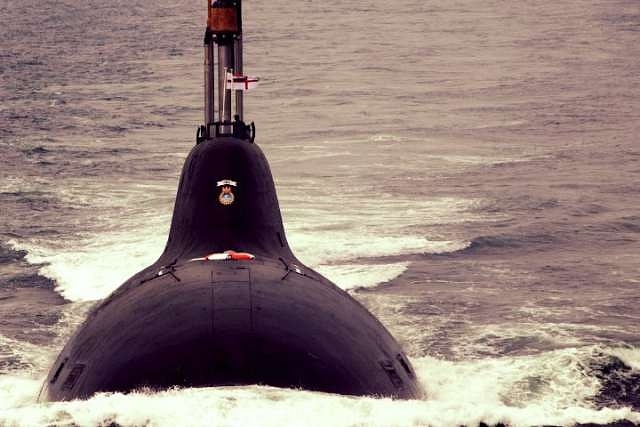
Navy To Seek Approval For Six Nuclear-Powered Submarines, Prioritise Project Over Second Indigenous Aircraft Carrier
The navy already operates a Russian SSN called INS Chakra.
The Indian Navy is likely to approach the Narendra Modi government soon seeking “acceptance of necessity” for the project to build six nuclear-powered submarines or SSNs, a report in the Hindustan Times says.
The report adds that the Navy had informed national security planners at the recently held Combined Commanders’ Conference at Gujarat’s Kevadia that the induction of six SSNs will be prioritised over the third aircraft carrier or the second indigenous aircraft carrier, which has been in the pipeline for years.
Given that SSNs are nuclear-powered, they can remain under-water for much longer than conventional deiseal-electric submarines, which have to surface every few days to recharge their batteries.
Conventional subs come to periscope depth and extend the snort mast above the water surface to ingest air needed for running noisy diesel generators to charge their batteries. This makes them susceptible to detection by enemy.
Given that nuclear-powered boats do not have to surface, they are much more difficult to detect in comparison to conventional ones.
In the past, reports have said that the SSN programme had been cleared by the Narendra Modi government in 2015. Work on the project had begin at the Gurgaon-based Submarine Design Centre sometime in 2017.
India currently has one SSN, INS Chakra, on lease from Russia.
INS Arihant, India’s first nuclear-powered ballistic missile submarine or SSBN, capable of carrying nuclear-tipped ballistic missiles, is also operational. The next SSBN, Arighat, is also likely to enter service later this year, reports say.
Two other SSBNs, bigger and better armed than INS Arihant and Arighat, are currently under final assembly at the Ship Building Centre in Visakhapatnam.
This development comes at a time when China’s People’s Liberation Army Navy has been ramping up its presence in the Indian Ocean.
US’ Office of Naval Intelligence says that the People’s Liberation Army Navy currently has at least five SSNs and four SSBNs in its fleet.